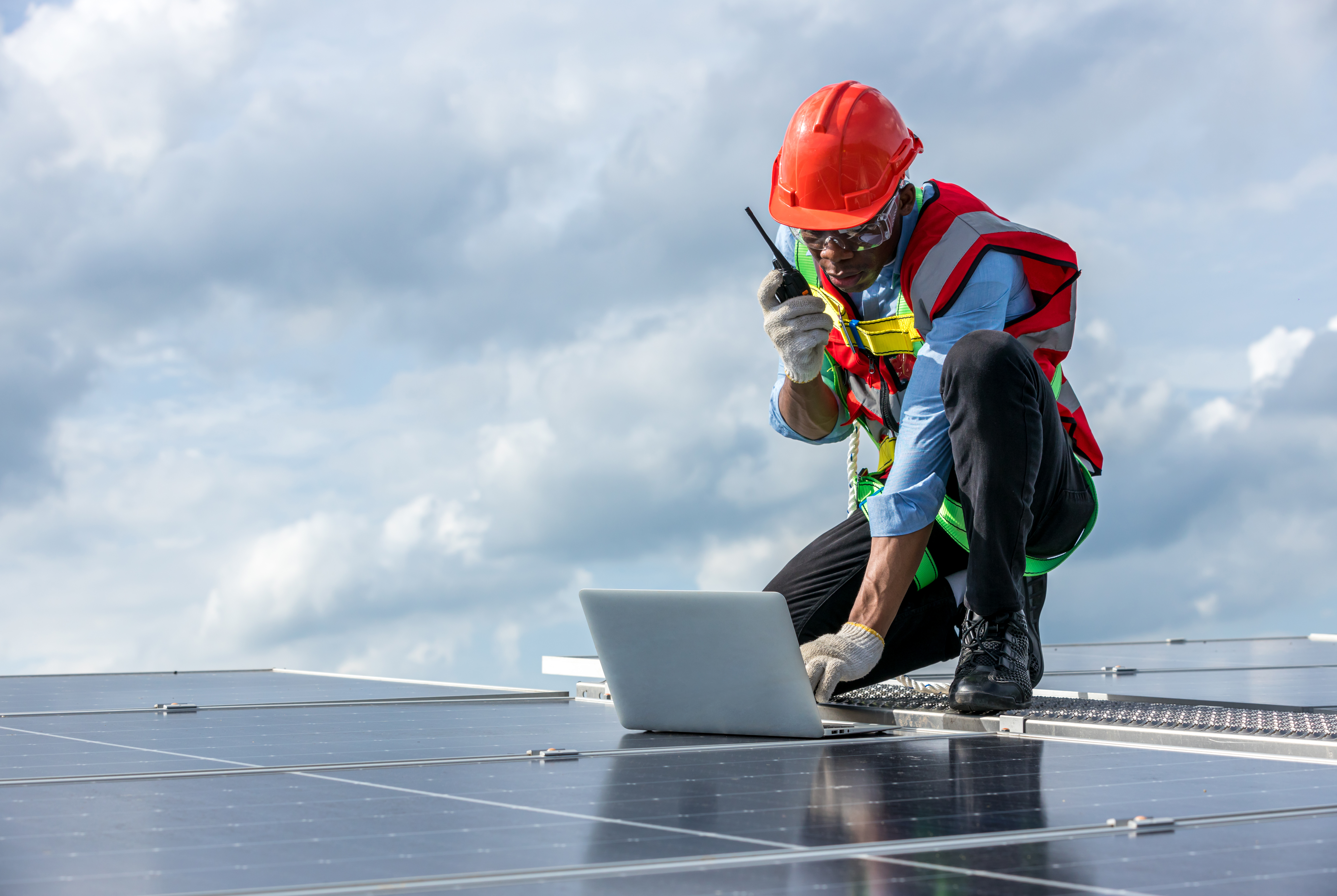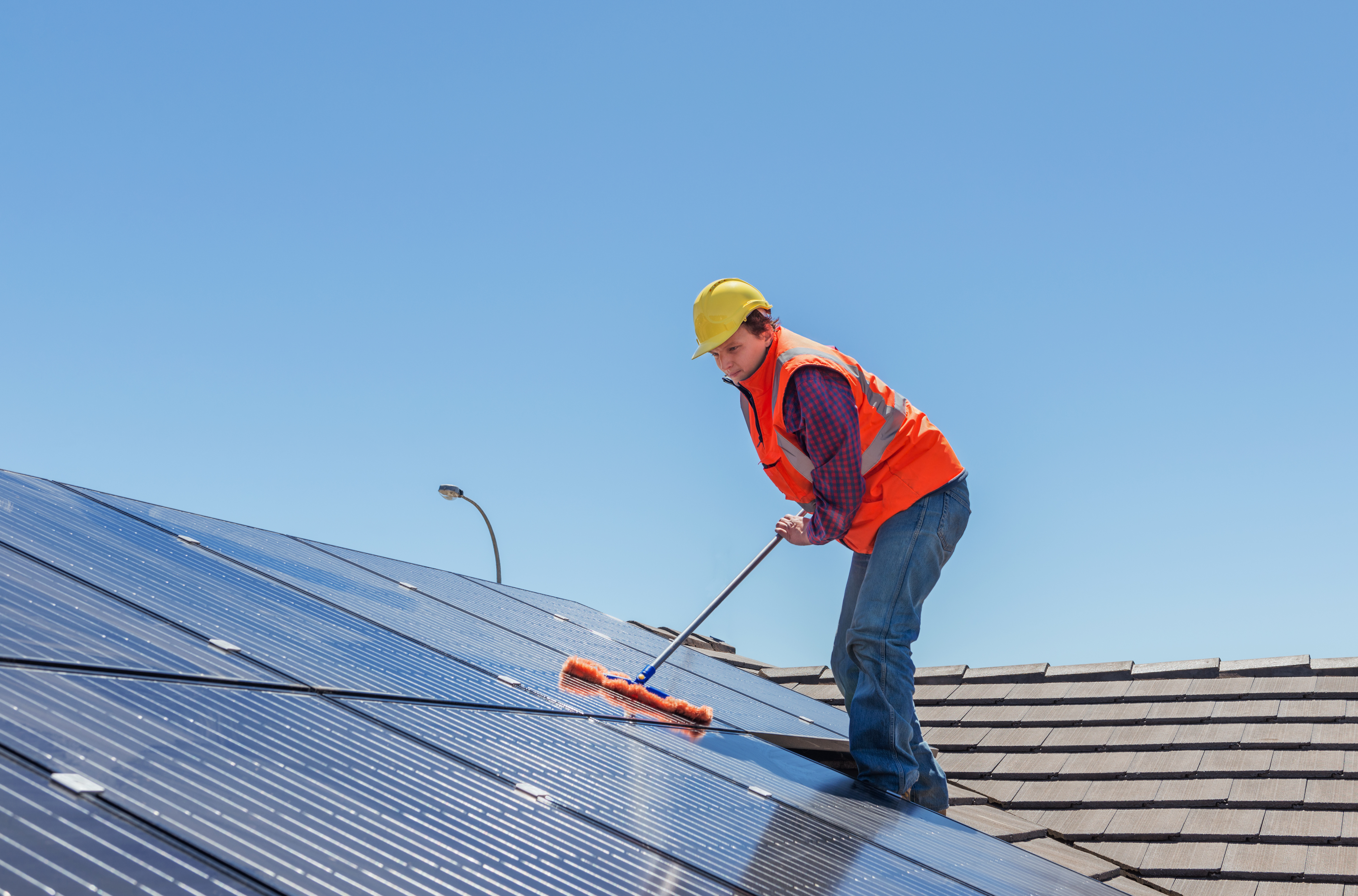More homeowners are looking to solar panels as a way to reduce utility costs and increase energy efficiency. To help maximize your clean-energy investment this article discusses simple steps to ensure your solar system is working at peak efficiency. When you're ready to implement your own solar energy solution, or upgrade your current one, a Panasonic solar expert can help you find the option that's best for you.
Solar panels are becoming more popular than ever due to their increasing cost-effectiveness. It’s now easier to wean yourself off the conventional grid and reap the rewards of lower energy bills than ever before.
But do you know how to get the most out of your solar system? According to Hunter Adams, co-founder of solar maintenance company Detach Reset Solar, the best way is by regularly having your panels cleaned, inspected, and maintained.
“This kind of monitoring checks for any potential issues,” Adams explains, “which is vital for ensuring that potential issues don’t turn into major ones. The earlier threats to your panels are mitigated, the better. Prompt attention preserves your panels and ensures you get the longest life out of them possible.”
Whether you’re a homeowner considering solar or already have an array, here’s Adams’ comprehensive guide to how to maintain and protect your investment in this renewable energy source.
Step One: Schedule regular cleaning and maintenance
To keep your panels functioning at maximum capacity, make sure to schedule regular visits from a professional solar technician.
“I’m sure you’re asking why you can’t just take care of this yourself,” Adams says. “Truth be told, some homeowners with advanced training in solar panel maintenance and the right gear might be able to, but if you don’t have this background, you could actually damage your solar panels without meaning to. Or, even worse, you could come to harm yourself.”
Indeed, Adams says that even using soap on your solar panels can fog them up and prevent them from working. “It leaves a residue,” he explains. “You need to use cleaning solutions that are customized for the material your panels are made from.”
Thus, for most people, it makes the most sense to find a reputable company to care for your solar system.
Step Two: Inspection and monitoring
The first thing these experts will do upon arrival is prioritize safety because, if approached incorrectly, solar panels are capable of electrocuting you. That’s why technicians will turn off the system and wear personal protective equipment, like safety goggles and gloves.
Next, technicians will conduct a visual inspection from the ground, looking for any obvious signs of damage. For instance, your panels might be discolored or have broken out in hot spots.
They will also check the surrounding area to make sure nothing is casting your panels into the shade. “We’ll take care of any tree branches that have started to infringe on them, for instance,” Adams says.
Step Three: Cleaning
After their inspection, solar technicians will clean your panels. “I wish solar panels always stayed as sparkling new as when they were first installed,” Adams says, “but just like anything else you keep outdoors, they can attract dirt, debris, and worse — think bird droppings, infestations of insects, and dens for small mammals.”
According to Adams, this material can block your photovoltaic cells from accessing the sunlight, which means they produce less electricity. What’s more, it can interfere with the panels’ ventilation, which can lead them to overheat and decreases their efficiency. Technicians will remove any obstructions and clean out any foreign matter so your panels are fully open for business and the air can move freely around them.
Step Four: Mitigating problems
Next, the technicians will check the frame, junction box, and all the connections in your solar array to ensure everything is positioned correctly. “When the difference between one angle and another can prevent your panels from receiving the maximum amount of sunlight, it’s particularly important to verify that everything is positioned just right,” Adams says. “Even if just one wire is loose, it can inhibit your panels’ performance. We go around and make sure the connections are tight.”
During this stage, technicians will also treat any signs of corrosion or wear and replace parts periodically. “If this isn’t done on time, a single small component can fail,” Adams explains. “Sometimes that can take down the whole system.”
In addition, technicians will weatherproof your solar panels, ensuring they are securely anchored and preparing them to survive the ravages of powerful storms. If your seals are showing signs of aging, they may add another layer to prevent water from getting in. In some areas, they may advise incorporating surge protectors to protect your panels from lightning.
Step Five: Testing
As Adams explains, knowledgeable technicians can tell if your solar panels aren’t producing the amount of energy they should by checking your solar system’s level of output and matching it against its specifications, ensuring you’re getting the return on investment that you expected. They also monitor your system’s software or inverter display to ensure that no abnormal patterns have developed in your energy production. If so, they can follow up, locate the issue, and resolve it.
Step Six: Documentation
Having regularly scheduled visits from professional solar technicians also creates a paper trail that can come to your aid if you ever need to file a claim with your insurance company or the manufacturer. “We keep detailed records of our inspections and take both before and after photographs to document the work,” Adams explains.
Preserve your investment, preserve the planet
The good news is that regular maintenance doesn’t cost much. On average, you can hire professional solar technicians to conduct routine cleaning and maintenance for $300 or less per year.
While regular maintenance gives you peace of mind that your solar panels are functioning optimally, it’s also good for the environment. Well-maintained solar panels harvest more renewable energy, which means the household depends less on fossil fuels. The smaller the carbon footprint, the better for our planet. As a homeowner who has their solar array regularly cleaned and maintained, you can be proud of doing your part to preserve the future.
This article was written by Editor from Home Business Magazine and was legally licensed through the DiveMarketplace by Industry Dive. Please direct all licensing questions to legal@industrydive.com.





